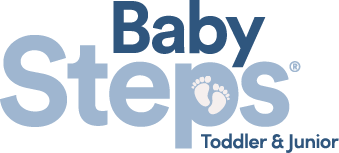Feeding your baby is one of the most important aspects of early parenthood, but it can also be one of the most challenging. Whether you choose to breastfeed or formula feed, understanding your baby’s nutritional needs and feeding behaviors is essential.
This guide will help you navigate the first year of feeding, from recognizing hunger cues to selecting the right formula for each stage of development.
Recognizing Your Baby’s Feeding Cues
Babies communicate hunger and fullness through nonverbal cues, and recognizing these signs can help you create a positive feeding experience. Feeding on demand—or cue-based feeding—is a research-backed approach that supports healthy growth and development.
Common Hunger Cues:
- Rooting (turning of the head towards touch)
- Sucking on hands, fingers, or lips
- Increased alertness or restlessness
- Crying (a late sign of hunger)
Common Fullness Cues:
- Slowing down on sucking or pausing frequently
- Turning away from the breast or bottle
- Losing interest in feeding
- Relaxing hands and arms
Studies suggest that feeding based on cues rather than a strict schedule leads to healthier weight gain and a more positive bonding experience between parent and baby (Shloim et al., 2017).
Choosing the Right Formula for Your Baby
Not all parents can or choose to breastfeed, and that’s perfectly okay. The key is selecting the right infant formula to ensure your baby gets all the essential nutrients they need.
Stage 1 InfantFormula (0-6 months)
Stage 1 infant formula is designed to closely mimic the composition of breast milk and includes essential ingredients like:
•DHA for brain and eye development
•Prebiotics to support digestion
•Whey proteins for easy absorption
Stage 2 Formula (6-12 months)
Stage 2 formulas are gentle on a newborn’s digestive system and provide balanced nutrition throughout the first year. Parents often choose Stage 2 formula as a transition from breastfeeding or to supplement breast milk.
Stage 3 Formula (12+ months)
As babies grow, their nutritional needs change. Stage 3 formula is designed for older infants and toddlers and contains:
•More iron and calcium for bone development
•Higher levels of vitamins and minerals
•Ingredients that support the transition to solid foods
Some studies suggest that goat’s milk-based formulas may be easier to digest than cow’s milk-based formulas due to differences in protein composition (Ryumina, 2021).
Cue-Based Feeding vs. Scheduled Feeding
Many parents wonder whether they should follow a feeding schedule or feed on demand. Research shows that cue-based feeding is more beneficial for newborns and young infants.
Benefits of Cue-Based Feeding
- Promotes healthy weight gain
- Reduces stress for parents and caregivers
- Lowers the risk of overfeeding or underfeeding
- Strengthens the bond between parent and baby
For preterm infants, cue-based feeding has been shown to reduce hospital stays and improve growth compared to scheduled feeding (Sefatbaqa et al., 2021).
Handling Feeding Difficulties
Some newborns struggle with feeding due to weak sucking reflexes, digestive issues, or medical conditions. If your baby experiences feeding difficulties, try external pacing, a method that involves giving small breaks during feeding to allow proper swallowing and breathing.
Tips for Managing Feeding Challenges:
- Observe your baby’s sucking and breathing rhythm
- Use a slow-flow nipple for bottle-feeding
- Keep your baby upright during and after feeds
- Consider switching to a Stage 1 infant formula with gentle proteins
For preterm babies, specialized feeding techniques like external pacing or imposed regulation can help develop better feeding skills (Palmer, 2020).
Supporting Maternal Well-Being During Feeding
Feeding a newborn isn’t just about nutrition—it also affects a mother’s mental and emotional health. The pressure to breastfeed or worries about formula choices can lead to increased stress and even postpartum depression.
Ways to Reduce Feeding-Related Stress:
- Seek support from a lactation consultant or pediatrician
- Trust your baby’s hunger and fullness cues
- Choose a feeding method that works for you and your baby
- Prioritize self-care and emotional support
A study found that postpartum depression is linked to feeding stress, particularly for mothers who feel pressured to breastfeed but struggle with the process (Kossakowska & Bielawska-Batorowicz, 2022).
Transitioning to Solid Foods
Around 6 months of age, most babies start showing interest in solid foods. This is an exciting milestone, but it’s important to introduce new foods gradually while continuing formula or breast milk.
Signs Your Baby is Ready for Solids:
- Can sit up with minimal support
- Shows interest in food when others are eating
- Has good head and neck control
- Opens mouth when food is offered
During this phase, Stage 3 formula can be an excellent supplement, ensuring your baby gets all the necessary nutrients while adjusting to new textures and flavors.
Final Thoughts: Feeding with Confidence
Feeding your baby during the first year is a journey of learning and adaptation. Whether you choose breastfeeding or formula feeding, the most important thing is that your baby is nourished and grows well. By recognizing feeding cues, choosing the right formula if formula feeding, and reducing stress around feeding, you can experience greater confidence and contentment, and provide the best start for your baby.
References
- Kossakowska, K., & Bielawska-Batorowicz, E. (2022). Postpartum Depressive Symptoms and Their Selected Psychological Predictors in Breast-, Mixed and Formula-Feeding Mothers. Frontiers in Psychiatry, 13.
- Palmer, M. (2020). Intervention Strategies for the Poor Feeder in the Newborn Intensive Care Unit: External Pacing versus Imposed Regulation., 13, 14-15.
- Ryumina, I. (2021). Goat’s milk-based formula when choosing artificial feeding for a newborn and a first-year baby.Meditsinskiy sovet = Medical Council.
- Sefatbaqa, S., Zahedpasha, Y., Hasanpour, M., Tilaki, K., Zarkesh, M., Arzani, A., & Als, H. (2021). Cue-Based Feeding and Short-Term Health Outcomes of Premature Infants in Newborn Intensive Care Units(NICU) : A None-Randomized Trial.
- Shloim, N., Vereijken, C., Blundell, P., & Hetherington, M. (2017). Looking for cues – infant communication of hunger and satiation during milk feeding. Appetite, 108, 74-82.
